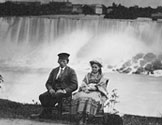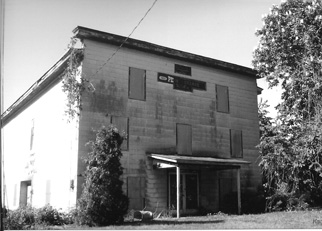

|
||||||||||||||||||||||||||||||||||||||||||
|
| ||||||||||||||||||||||||||||||||||||||||||
 |
 |
 |
 |
 Local Granges Advocated Interests of Farmers  In an age before cell phones, e-mail and text messaging, when people wanted to communicate and socialize, fraternal organizations were often the center of a community’s activities. The Grange movement was founded in 1867 by a group of seven farmers from Minnesota who believed they needed an organization to represent their interests much the same way that labor unions represented industrial workers in the cities. The Grange’s official name is the Order of Patrons of Husbandry and is based on the structure of the Freemasons, with hierarchal order and a system of attainable degrees. The more common name, “grange,” comes from the Latin word for grain or granary, denoting a farm. A major difference from other fraternal societies is that from the beginning, women were admitted as full members, equal to men. The Grange offered rural farming families a place to interact, socialize, exchange information and advocate for issues that were vital to their way of life. In the first half of the 20th century, there were over a million Grange members. Today there are approximately 300,000 nationwide. In 1868, the Fredonia Grange became the first to organize in New York State. The first Niagara County Grange opened in Somerset in 1908. Within the next ten years, Grange Halls were established in Gasport, Newfane, Hartland, Pekin, Lockport, Pendleton, Warrens’ Corners, Ransomville and Lewiston. The county or “Pomona Grange” was organized in 1910. Lockport Grange #1262 was founded in 1912 and met above a furniture store at Walnut and Pine Sts. in the city. The Grange and its early members were responsible for a number of far-reaching programs, some of which are still in existence today. Members lobbied on all government levels for better education for rural school children (BOCES); Rural Free Mail Delivery; and the Farm Credit Bureau. Youth groups such as the Junior Grange, the 4-H and the Future Farmers of America were either started or adopted by the Grange. Many of the Grange Halls are closed now. Fewer farmers and other outlets for social interaction have caused Grange membership to decline in this area. A few Grange Halls, such as the one in Pekin, still stand but are shuttered and unused. They are a legacy to a bygone era when Niagara County was still a predominately agricultural region. Douglas Farley, Director Ann Marie Linnabery Erie Canal Discover Center 24 Church St. Lockport NY 14094 716.439.0431 CanalDiscovery@aol.com www.NiagaraHistory.org |
|